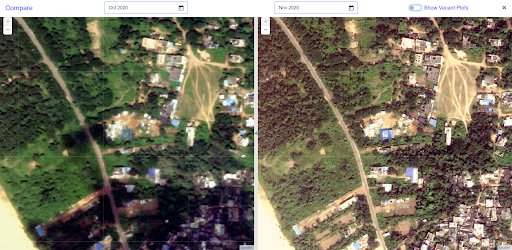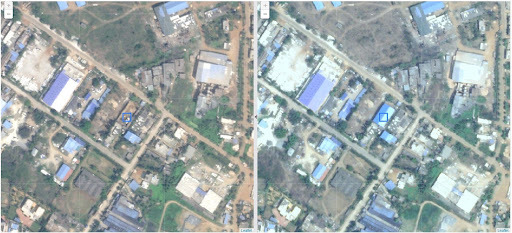Using Satellite Data to Spot Early Signs of Unauthorized Government Land Use and Encroachment in India
Bhubaneswar is one of the fastest-growing cities in India, witnessing land-use changes on a daily basis. As a developing city, encroachments pose a threat to the protection of environmentally sensitive areas (wetlands, water bodies, forests, and more) that are vital to the long-term preservation of biological diversity and other natural resources. Moreover, unauthorized land use creates a challenge for planned development, resulting in a loss of revenue for the city.
Without the ability to dect and enforce adequate transparency and accountability, public land is prone to encroachment, engendering haphazard growth.
With the accelerating pace of change in Bhubaneswar, the city and its state agency, the Odisha Space Application Centre (ORSAC), needed access to timely and precise information. High-resolution, efficient imagery wasn’t possible with traditional satellite tasking models, resulting in a lack of insight, inaction, and uninformed decision-making.
To solve this problem of land-use change, ORSAC—an influential space technology and research institute for the state of Odisha in India—teamed up with Vassar Labs, a pioneer in IOT, machine learning and artificial intelligence-based solutions. The team developed a compelling AI-based solution on top of the Planet’s high-frequency, high-resolution SkySat imagery, called Bhubaneswar Land Use Intelligence System (BLUIS).
On a monthly cadence, the new solution monitors unauthorized land-use changes and encroachments in Bhubaneswar.

BLUIS’ GIS dashboard comparison of two images that capture an unauthorized land-use change indicated by the blue square. Credit: Vassar Labs
The BLUIS system downloads SkySat data and the imagery is passed through an algorithm that classifies the imagery. The system then looks at the temporal change in the imagery, detecting any changes in the land where new buildings have been constructed. These changes in the imagery are alerted to Bhubaneswar officials for further validation and action perspective.
Bhubaneswar is the first state in the country to tap space technology for safeguarding government land.

The comparison of past and current imagery captures an unauthorized new building indicated by the blue square identifying illegal land use. Credit: Vassar Labs
Unlike traditional satellite tasking models, SkySat imagery enables identifying land changes much earlier. The global coverage and responsiveness of Planet Tasking allow customers, like ORSAC and Vassar Labs, to access recent high-resolution imagery of places that are most relevant to their needs. This early identification of changes reduces resource requirements and automatically identifies changes each month, therefore catching encroachments sooner, resulting in financial savings.
Download the complete case study to learn how the BLUIS system, powered by Planet data, has enabled ORSAC to identify land-use changes on time, act on time for unauthorized land change, and save money and resources.




